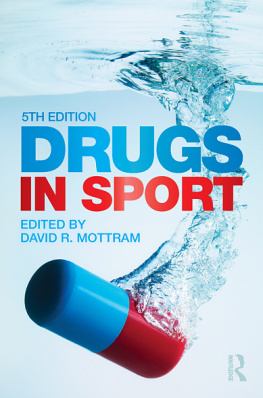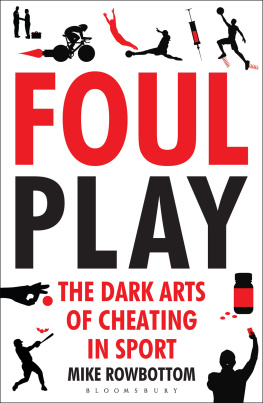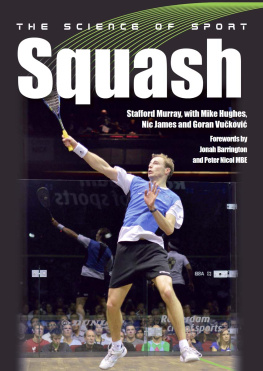Drugs in Sport
Drug use and abuse is perhaps the biggest challenge facing sport today. However, in the eye of the storm of public and press opinion and with medals and morals at stake it can be difficult to gain a clear perspective on this complex issue. Drugs in Sport is the most comprehensive and accurate text available on the subject. Now in a fully revised and updated fifth edition, taking into account the latest regulations, methods and landmark cases, the book explores the hard science behind drug use in sport, as well as the ethical, social, political and administrative context. Key topics include:
Mode of action and side effects of each major class of drugs used in sport
Discussion of cutting-edge issues, including gene doping
The latest doping control regulations of the World Anti-Doping Agency (WADA)
Methods and advances in doping control, including new intelligence-led detection policies
The use of Therapeutic Use Exemption for certain drugs banned in sport
Issues surrounding non-prohibited substances and ergogenic aids
An assessment of the prevalence of drug taking in sport
Accessibly written, extensively referenced, and supported throughout with illustrative case studies and data, Drugs in Sport provides a comprehensive, objective resource for students and researchers, athletes, sports scientists, coaches, journalists, sports administrators and policymakers.
David R. Mottram is Emeritus Professor of Pharmacy Practice at Liverpool John Moores University. His research interests have centred on the use of drugs in sport with particular emphasis on over-the-counter drugs. He is the editor of 4 previous editions of Drugs in Sport.
Drugs in Sport
Fifth Edition
Edited by David R. Mottram

LONDON AND NEW YORK
First published 1988
Second edition 1996
Third edition 2003
Fourth edition 2005
Fifth edition 2011
by Routledge
2 Park Square, Milton Park, Abingdon, Oxon OX14 4RN
Simultaneously published in the USA and Canada
by Routledge
270 Madison Avenue, New York, NY10016
Routledge is an imprint of the Taylor & Francis Group
This edition published in the Taylor & Francis e-Library, 2011.
To purchase your own copy of this or any of Taylor & Francis or Routledges collection of thousands of eBooks please go to www.eBookstore.tandf.co.uk.
1988, 1996, 2003, 2005, and 2011 David R. Mottram for selection and editorial matter; individual chapters the contributors
The right of David Mottram to be identified as author of the editorial material, and of the authors for their individual chapters has been asserted in accordance with sections 77 and 78 of the Copyright, Designs and Patents Act 1988.
All rights reserved. No part of this book may be reprinted or reproduced or utilised in any form or by any electronic, mechanical, or other means, now known or hereafter invented, including photocopying and recording, or in any information storage or retrieval system, without permission in writing from the publishers.
British Library Cataloguing in Publication Data
A catalogue record for this book is available from the
British Library
Library of Congress Cataloging in Publication Data
Drugs in sport / edited by David Mottram. 5th ed.
p. cm.
Includes bibliographical references and index.
1. Doping in sports. I. Mottram, D. R. (David R.), 1944 [DNLM: 1. Doping in Sports. 2. Sports Medicine. 3. Substance-Related Disorders. QT 261 D7944 2011]
RC1230.D786 2011
362.29dc22 2010017015
ISBN 0-203-87382-3 Master e-book ISBN
ISBN 978-0-415-55086-4(hbk)
ISBN 978-0-415-55087-1(pbk)
ISBN 978-0-203-87382-3(ebk)
This edition of Drugs in Sport is dedicated to Tom Reilly who died in June 2009. Tom was the first Professor of Sports Science in the UK and had an exemplary record in teaching and research. He had been a contributor to this book since its first edition in 1988. Tom is sadly missed by his colleagues.
Contents
DAVID R. MOTTRAM
|
DAVID R. MOTTRAM
|
MARK STUART
|
ALAN J. GEORGE AND DAVID R. MOTTRAM
|
ALAN J. GEORGE AND DAVID R. MOTTRAM
|
DAVID J. ARMSTRONG AND DAVID R. MOTTRAM
|
DAVID R. MOTTRAM
|
DAVID R. MOTTRAM
|
DAVID J. ARMSTRONG
|
DAVID R. MOTTRAM
|
DOMINIC J. WELLS
|
DAVID R. MOTTRAM
|
PETER N. ELLIOTT
|
DAVID R. MOTTRAM
|
PETER N. ELLIOTT
|
THOMAS REILLY
|
DAVID R. MOTTRAM
|
DON MACLAREN
|
DAVID R. MOTTRAM
|
NEIL CHESTER
|
NEIL CHESTER
|
PETER N. ELLIOTT
|
THOMAS REILLY AND JIM WATERHOUSE
|
DAVID J. ARMSTRONG
|
DAVID R. MOTTRAM
|
Contributors
David J. Armstrong
Peter N. Elliott
David R. Mottram
School of Pharmacy and Biomolecular Sciences Liverpool John Moores University Byrom Street Liverpool L3 3AF UK
Neil Chester
Don MacLaren
Thomas Reilly
Jim Waterhouse
Centre for Sport and Exercise Science Liverpool John Moores University Byrom Street Liverpool L3 3AF UK
Mark Stuart
International Forum on Quality and Safety in Health Care BMJ Group Ltd. BMA House Tavistock Square London WC1H 9JR
Dominic J. Wells
Gene Targeting Group, Department of Cellular and Molecular Neuroscience Division of Neuroscience and Mental Health Imperial College London Hammersmith Hospital Campus 160, Du Cane Road London W12 0NN
Section I
The basis for and regulation of drug use in sport
Chapter 1
An introduction to drugs and their use in sport
David R. Mottram
1.1Definition of a drug
Drugs are chemical substances that, by interaction with biological targets, can alter the biochemical systems of the body. The branch of science investigating drug action is known as pharmacology. Interactions may be mediated through a variety of target tissues within the body. For example, effects on cardiac muscle by drugs such as ephedrine can be an increase in the force and rate of beating of the heart; stimulation of nerve endings in the central nervous system by drugs such as amphetamine can produce changes in mood and behaviour; interaction with metabolic processes with drugs such as insulin can be used in the treatment of disorders such as diabetes.
In this chapter, frequent reference is made to drugs on the World Anti-Doping Agency (WADA) Prohibited List. The 2010 version of this list is presented in .
1.2Classification and description of drug names
Drugs are variously classified and described by their:
generic name (international non-proprietary name, INN)
proprietary name (manufacturers name)
mechanism of action.
The generic name (INN) is the internationally recognised name of the drug and should normally be used when describing the drug.











